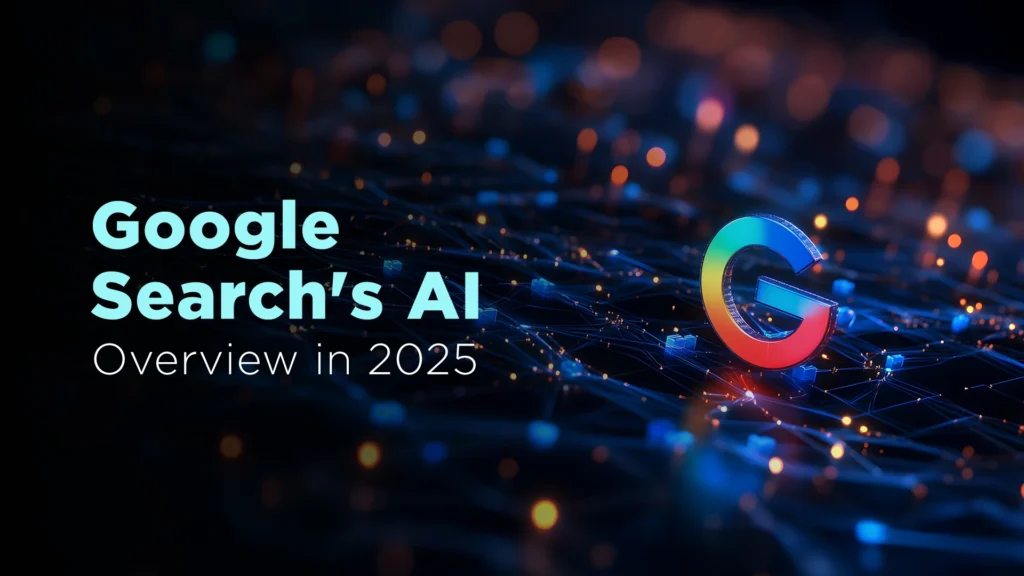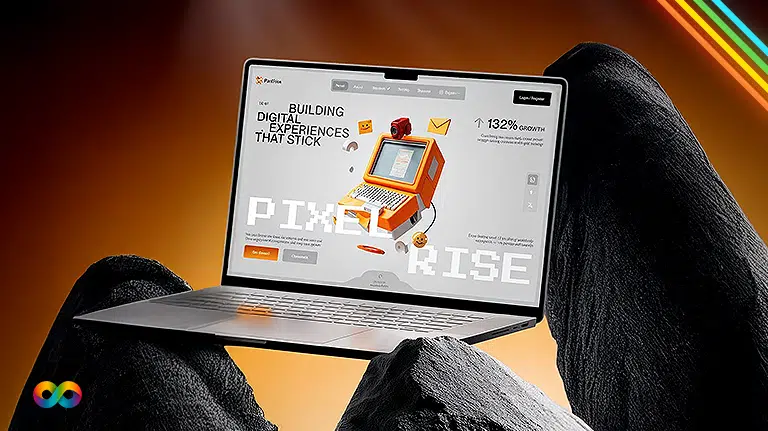
How to Rank in Google’s AI Overviews in 2025 – The SEO landscape has been shifting quickly, and 2025 marks another significant shift: Google AI Overviews are now front and center. If you have noticed, search results are becoming more and more led by AI-generated summaries that access information from the highest-ranking pages. This means that your website must not only be found in the traditional sense but also provide clear, authoritative, and easy-to-navigate information for Google’s AI to trust enough to include it in its AI Overviews. So, how can we optimize for this? Below, we present practical, field-tested methods to help you rank in Google AI Overviews in 2025.
1. Know what AI Overviews Are
Google’s AI Overview is a generative search summary that gives the user a quick answer or overview from multiple trusted sources. This fundamentally alters user behavior—people are often getting the answer they were looking for, without needing to click. However, Google is using the content of your site to create these generative AI Overviews.
So if your page is included as a source for an AI Overview, you stand to gain authority, brand recognition, and potential follow-up clicks when users want more information.
2. Highlight Authority and Topical Expertise
When Google decides to use your content as an AI Overview, your content must leave no doubt that you are a topical authority. Google AI looks for signals that demonstrate E-E-A-T (Experience, Expertise, Authoritativeness, Trustworthiness). Here are some ways to establish yours –
- Detailed externally-facing content – Write more than a 500-word blog, and go a level deeper with a comprehensive guide that answers the other questions related to their query as well.
- Regularly updated – Timeliness matters. Google AI likes newly updated and relevant content.
- Showcase experience/expertise – Author bio, qualifications, experience. Quotes from experts, attribution to trusted sources, etc.
3. Structure Your Content to be Easily Extracted by AI
Google will recognize well-structured content. This means –
- Using clear headings (H2, H3, H4, etc) to separate topics.
- Using bullet and number lists.
- Using short paragraphs.
- Including concise summaries or takeaways.
- Using schema markup for FAQs, How -To’s, and other schemas as much as possible, as applicable.
- If you limit the cognitive effort the AI has to make to decipher your content, then sooner or later it will extract it.
4. Target Conversational Long Tail Queries
Generative AI is especially good at answering conversational queries. So you should be targeting “how”, “why”, “what”, and “best ways to…” as natural language in your subject matter approach. Do your keyword research with a focus on long-tail, question-based phrases.
- Look at the “People Also Ask” results.
- Add an FAQ section to every page that hits those questions.
When your content matches up more closely with what people are asking, you will increase your chances of being included in an AI Overview.
5. Content That Leverages Firsthand Data & Unique Observations
You’re not going to succeed with generic content. AI is trained on massive datasets that are looking for value that stands out from what it has seen. If your page merely restates what is already present on the internet, it may bypass yours for sources that are more unique and/or hold more authority. Add in –
- Original research or a survey
- Proprietary data
- Case studies
- Real examples or stories
These factors express true authority and make your content more enticing for inclusion.
6. Don’t Forget About Traditional SEO Basics
You can’t be included in an AI Overview without ranking well in the first place! The fundamentals of SEO still count –
- High-quality back-links
- Improving your site speed / core web vitals
- Mobile-friendly
- Adding title tags and meta descriptions
- Adding descriptive alt text for images
7. Encourage Engagement and Click-Through
While AI Overview is giving answers to searchers, Google doesn’t forget about user signals. If your content provides user signals by getting people to click through, stay longer, and engage, this is a strong sign that your content deserves to be included in the AI Overview!. So –
- Use enticing calls to action
- Add internal links to guide users
- Embed engaging visuals and videos
- Create pages easy to navigate
8. Use Multimedia and Rich Snippets
AI Overviews frequently pull mixed media. Add related videos, infographics, and images that clarify your topic. Moreover, use schema to help Google understand your media and boost your chances of appearing in featured snippets, which feed into AI Overviews too.
Conclusion
Ranking in Google’s AI Overviews in 2025 is all about combining classic SEO best practices with a clear focus on structure, authority, and unique insights. By doing so, you position your brand as a reliable source ready for the AI-first search era. For expert help to boost your appearance in AI Overviews and beyond, contact Infinity Digital. Our proven SEO strategies ensure your business stays ahead of the curve.
FAQs About Ranking in Google’s AI Overviews
How long does it take to rank in Google’s AI Overviews?
There is no set timeline; it depends on your site’s authority, the quality of your content, and how well it aligns with user intent. With strategic effort, various websites see improvements within 3 to 6 months.
Does AI Overview ranking replace traditional SEO?
No. AI Overviews build on top of traditional SEO. If your page does not rank organically, it won’t be considered by Google’s AI for summaries. Strong SEO basics are still important.
Are backlinks essential for AI Overviews?
Yes. Backlinks remain a top trust signal. Authoritative backlinks tell Google’s AI that your website is a credible source worth including in its summaries.
Should I improve old content for AI Overviews?
Yes. Audit your current pages. Add structure, update outdated information, insert FAQs, and ensure your content answers related questions in a clear, authoritative way.





